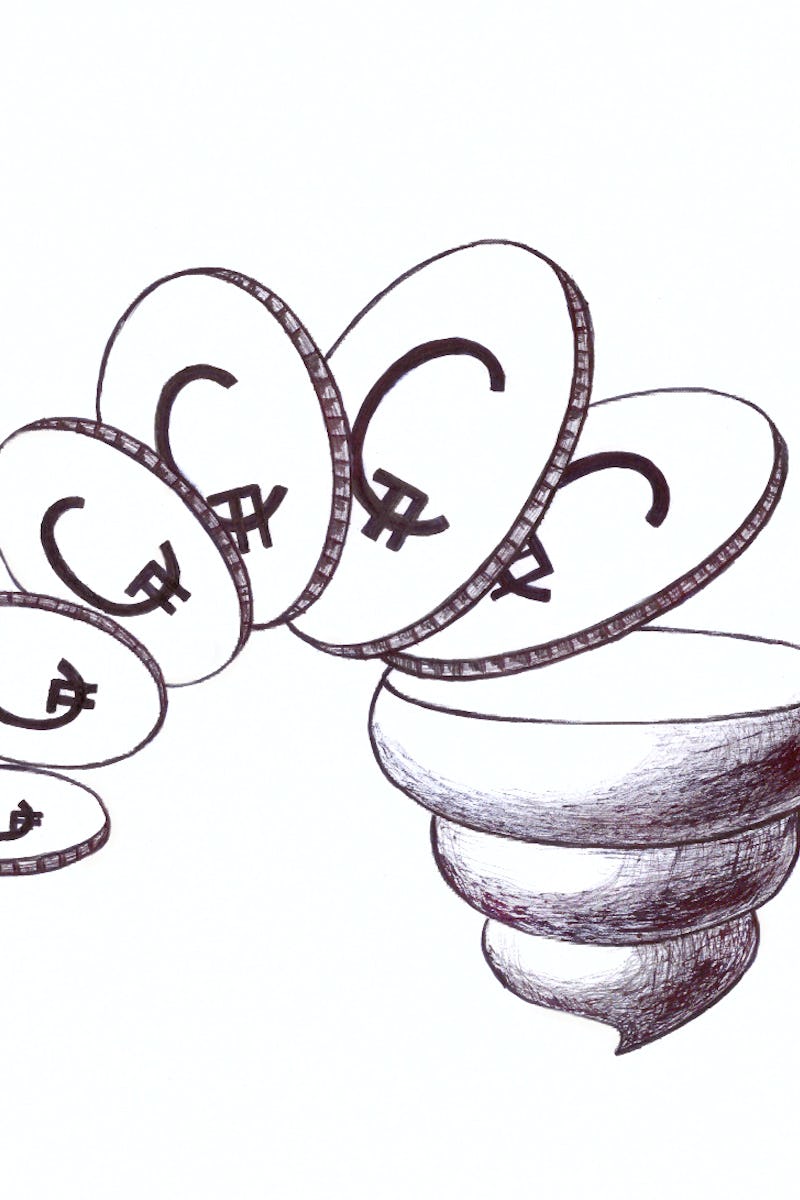
“Faeces... is a treasure of great value to me.”
Look: South Korean toilet will pay for your poop
Engineers from UNIST in South Korea have a designed an ecofriendly toilet that transforms solid waste into a biogas that can be used to power the home.
by Sarah WellsIt’s an activity that has many names — “launching a torpedo,” “laying a brick,” or simply “sitting on the throne.”
No matter what you call it, sitting down to relieve yourself on the toilet is generally an activity with little fanfare or benefit, aside from helping your colon dispose of waste. Honestly, it’s downright boring.
But that could all be changing with the invention of a power-harvesting and virtual currency-generating toilet from the mind of South Korean environmental engineer Jaeweon Cho.
Cho and his students at the Ulsan National Institute of Science and Technology have been developing this toilet since 2016 as part of the institute’s “Science Walden” program. They have recently released new videos and images of the waste munching toilet at work.
While BeeVi might look like a normal toilet, it’s actually connected to a human-sized bioreactor.
Beyond making your daily ritual a little more interesting, Cho tells Inverse that he hopes this toilet can help provide power and fertilizer to low-resource areas — including their northern neighbors.
“I have [a] vision to work with the people of North Korea,” says Cho. “They are lacking water, energy, and fertilizer, which BeeVi can provide. I hope they are interested in my idea.”
How does the BeeVi toilet work?
From the outside, you wouldn’t know there was anything special or different lurking inside the bowels of the BeeVi, explains Cho. But underneath this unassuming toilet is a whole new kind of sewage system that uses a vacuum instead of water to move waste.
“I even talk about faeces during mealtimes.”
This isn’t the only innovation that makes the toilet more eco-friendly, however, says Cho. That lies in a bioreactor that is taller than Cho himself.
Here’s how it happens:
- Waste deposited into the toilet bowl is separated into liquids and solids
- The solid waste is then sent via vacuum to a biological reactor downstream of the toilet itself
- This solid waste is then exposed to anaerobic bacteria that process the waste and create methane in its place (kind of like microscopic bacteria farts). This process is similar to composting toilets you might’ve seen at national parks.
- This bio-gas can then be collected from the reactor and put to use
“At Science Cabin — a living laboratory at the campus — methane is being utilized in the kitchen and bathroom,” says Cho, such as hot-water boilers and fuel cells.
According to Cho, one person’s waste (about 500 grams per day) can produce about 50 liters of methane can be produced from one person’s waste. Cho says this corresponds to 0.5 kWh of energy — that’s about 1/100th the range of a Tesla.
In a BeeVi world, users could get “free” perks — like cafe drinks or music.
After making their deposit, BeeVi users will receive 10 fSM (or “feces standard money”) that can be used on campus to buy things like books or snacks.
“I had only ever thought that faeces are dirty, but now it is a treasure of great value to me," Reuters quotes postgraduate student Heo Hui-jin as saying. "I even talk about faeces during mealtimes to think about buying any book I want."
Does it really create a cryptocurrency?
While some articles covering BeeVi were quick to call fSM a cryptocurrency, Cho says that’s not quite right because this currency is not based on a blockchain.
Instead, as a virtual currency, fSM is designed to draw cautious users into using an eco-friendly toilet. But before you begin scheming how to get rich on your own waste, Cho says fSM isn’t designed to be saved.
“[fSM] is designed with a negative interest rate of 7 percent,” Cho explains. “Thus, it is only for transaction and sharing — not for being stored.”
When can you use it?
In a 2021 study, Cho looked at acceptance rates for this kind of toilet and found that this toilet could be available worldwide today if it were up to users.
But just because people are willing to pop a squat doesn’t mean existing infrastructure is ready for these toilets, at least quite yet. The BeeVi toilet system would have buildings bypass traditional sewers altogether and require large human-sized bioreactors to be installed in their place.
While this isn’t a hopeless situation, Cho says it may still take some time to convince government and industry officials to take the plunge. But when they do change their minds, Cho doesn’t think they’ll regret it for a second.
“This toilet and subsequent system can [help] save water, transform [waste] into energy and manure and connect the public,” Cho says.